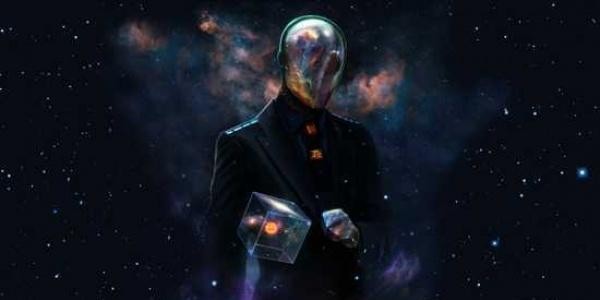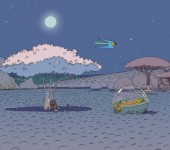
In part one of this article we have discussed the possible technological and biological characteristics of an alien race. Now, let us try to imagine how these societies, so radically different from ours, function on a daily basis. How would these societies attribute value, what kind of societal systems would they put in place and how did their technological advancement influence them.
6. The Threat and Promise of Artificial Intelligence
The idea of an all-knowing, self-aware artificial entity taking control of humanity by using its dependency on technology is not something new. Movies, such as The Terminator or Kubrick’s Space Odyssey, have thoroughly explored this scenario. Yet, after Deep Blue, a chess program developed by IBM, defeated the human world chess champion, Garry Kasparov, it became apparent that the computer entered the realm of adaptive intelligence. A developed alien civilization would most likely go through a similar evolutionary phase, but how would they adapt? One scenario would be that they master robotic AIs and probably use them as cheap and efficient workforce. On the other hand, we might one day encounter a race which is wholly artificial, maybe the former servants of a master race. One of the most interesting possibilities is provided by the famous Borg, known to any Star Trek fan. An extraterrestrial race may become so developed that it converges completely with its own technology. Maybe the most unlikely, but interesting possibility is an alien race that has completely abandoned the idea of artificial intelligence. The fans of Frank Herbert’s famous Sci-Fi novel, Dune, will probably remember the Butlerian Jihad, a war fought between the human race and the “thinking machines”. It is not impossible for us to meet a race which uses advanced technology, but strictly excludes the use of AI.
7. Alien Cognition
There is an incredible cultural difference between the common American citizen and the member of the Micronesian Yap tribe, for example, despite having the same basic physical configuration, the same needs and the same macro-environment. Now try to imagine how an extraterrestrial sees the Universe he inhabits. We already know that we will have very different means of communication. The 1977 Voyager expedition included 116 images meant to display the diversity of human life in an attempt to communicate with alien civilizations, but there is a considerable possibility that the recipients will not possess any conceptual understanding of pictures or music. Communication will probably be close to impossible, at least without some kind of universal translator.
8. A Place in the Universe
It is very difficult to establish which part of our Galaxy is more suited for sustaining life forms. It is generally believed that the outer rim and the center are less likely to sustain life due to less access to energy, the level of gravitational pull and proximity to destructive phenomenon (such as Black Holes). The probability is that alien civilizations would develop along the middle circumference of our Galaxy, and yet, if they master advanced space travelling technology, they will probably be able to expand, explore and adapt to other parts of the Universe.
9. Lifespan and Life Quality
It is generally believed that the quality of life, and implicitly the lifespan of each individual, depends on immediate factors (such as the individual’s concern with his health, his diet, genetic heritage etc.) and social factors (air quality, access to medical facilities, level of medical and pharmaceutical technology etc.). A highly advanced race of aliens would most likely have achieved immortality by the time they are able to travel from one part of the Galaxy to the other, due to the implicit technologic advancement. Yet, immortality raises some questions regarding their understanding of family, age, religion and death. How does one value life if life is limitless? Why start a family if there is no social, economic or cultural need for it? And if they continue to multiply, how do they deal with population growth? Also, how would we react towards something that is so unnatural for us?
10. “I Want to Believe”
In order for a planet to sustain intelligent life, it must fulfill a large number of criteria, including proximity to a stable energy source, gravity, existence of water, and the absence of any destructive environmental phenomenon. The good news is that several planets which fulfill these conditions have already been identified, though the distance which separates us from them is still far beyond our humble capabilities. For now, we see ourselves it the position of friendly hosts rather than adventurous travelers and it is quite probable that we will remain planet-bound for some time to come. Until we finally and truly leap beyond the boundaries of our world, we must be ready to encounter those who have already made that step. In the meanwhile, we can only wait and be reminded of a famous inscription found on the office walls of a somewhat eccentric Federal agent.









